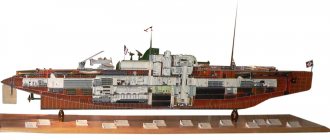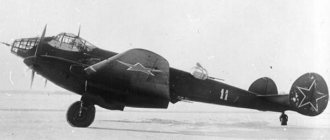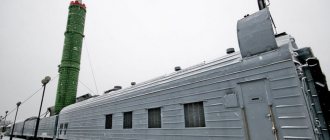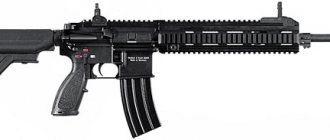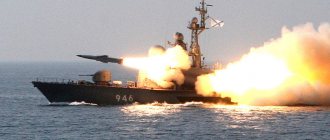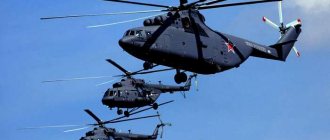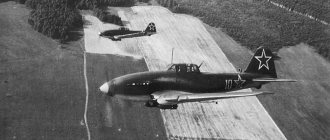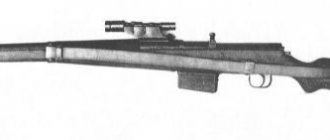Rovel’s group was called “ghost planes” - they were elusive, almost invulnerable, and without them the Barbarossa plan would simply have been impossible. Already in the first days of the war, these scouts flew over Moscow, sowing panic and photographing the Kremlin. It was largely because of them that the defense of the capital almost ended in disaster: Rovel’s charges tracked the slightest movements of Soviet troops and equipment. In the words of historians, it was the “all-seeing eye of the Fuhrer” - and only suicidal air rams helped to cope with it.
"Disgusting Men" together with Gaijin Entertainment tells about one of the most exciting episodes of the Battle of Moscow.
You can feel the severity of the fight against the German Junkers and Heinkels in the shooter Enlisted, created on the War Thunder engine. Closed beta testing of this scenario has already begun on PC and Xbox Series X.
Rovel Group
Theodor Rovel
Theodore Rovel has always been a far-sighted strategist. At a time when the German army was in a serious crisis after the First World War and few people believed in it, he realized that it was the future and joined the Abwehr. In an era when long-range reconnaissance seemed something obscure and of little use, he created an espionage tool, without which the Barbarossa plan would not have been possible. But as soon as the real heat began in World War II, he fled and thereby cleverly avoided the Nuremberg trial. In general, it was the same fox.
During World War I, Theodor Rovel served in the navy, but by 1916 he transferred to naval aviation, seeing its potential. After the defeat of Germany, he got a job at the Hanseatic League, a civilian airline that later became Lufthansa. But here, despite the apparent decline, he found the most promising direction. At first he was engaged in aerial photography for private companies (in fact, industrial espionage), and then, thanks to old connections, he got a job in the Abwehr, the intelligence service of the exhausted and tormented Weimar Republic. However, they paid well there, and there was no risk: Rovel flew on passenger planes, and along the way photographed places of interest to intelligence along the route.
In 1935, he was already officially accepted into the Luftwaffe, where he took part in the development of special cameras and reconnaissance aircraft. In 1936, Rovel was appointed commander of the newly formed special forces squadron. And in 1939 he became the commander of a reconnaissance air group, which since then has unofficially carried his name. In 1944, having realized where the war was heading, he resigned, and after the war he successfully settled in South Africa, where at that time they turned a blind eye (if not with sympathy) to the crimes of the Nazis. However, in just a few key years - from 1935 to 1941 - he and his team became legends even among their enemies. His unit was called the “ghost planes.”
The cockpit of a Dornier Do 17 aircraft
Even before the Great Patriotic War, Rovel's group showed itself excellently on the Western Front. This detachment invaded the airspace of Britain and France, Belgium and the Netherlands with almost impunity. A little later, reconnaissance planes flew over almost the entire Mediterranean, reaching the Persian Gulf and Egypt. Suffice it to say that it was Rovel’s group that studied the Maginot Line and helped German troops bypass it without hindrance. And it was Rovel's group that discovered and mapped British anti-aircraft radars before they were even completed - this allowed Germany to carry out relatively successful air raids on England.
For the Soviet Union, the activities of Rovel’s group resulted in simply monstrous consequences. In the words of military historian Mikhail Zefirov, she was “at the very crest of the Blitzkrieg wave.” Even before Germany invaded the territory of the USSR, this detachment photographed the entire border zone for 200-300 kilometers. “Ghosts” identified 66 Soviet airfields, which turned out to be a disaster - they were destroyed by German aircraft in the very first days of the war. Already on June 22, 1941, the planes of Rovel’s group flew over Moscow with absolute impunity, remaining unnoticed. Soviet air defenses discovered aircraft flying over the capital only on June 26. This is how it is described in the book “Ghost Planes of the Third Reich. Secret operations of the Luftwaffe" by the same Zefirov:
“On the afternoon of June 26, a Ju-88D from the 4th squadron, whose pilot was 32-year-old Lieutenant Cornelius Noel, and whose navigator was 22-year-old Chief Lieutenant Joseph Bisping, guided by the call sign of the Moscow radio station, flew to the capital. The sky that day was completely clear, and the crew clearly saw all areas of the huge city below them. On the central streets and squares, trolleybuses and trams traveling along them were clearly visible.
The seat of the Soviet government, the Kremlin, also lay in plain sight. Then Russian fighters appeared, but not one of them was able to rise to the altitude at which the Junker was flying. The Germans calmly photographed the anti-aircraft batteries located around Moscow and returned safely to their airfield. Ten days later - on the afternoon of July 7 - Noel again headed for the Russian capital. This time the crew took detailed and high-quality photographs of the entire city, including Red Square and the Kremlin, which were subsequently used to prepare the first massive raids on the Soviet capital. And again the air defense fighters were powerless.”
Aircraft of the Rovel group
But how did they do it? Couldn't Soviet anti-aircraft guns and fighters do anything? In general, this is true. And not only Soviet, but also British planes were almost powerless against Rovel’s aviation. And that's why:
The history of the creation of the Messerschmitt Bf.109 aircraft
In the first half of the 1930s, many aircraft designers came to the conclusion that the age of the biplane fighter was ending. These aircraft, which dominated the air during World War I, could not be made high speed due to excessive drag. It is not surprising that the design of monoplanes began simultaneously in several countries.
Germany, it would seem, had no chance of acquiring its own modern fighter, since the development of its military aviation was hampered for a long time by the “Versailles” restrictions. The appearance of the Bf.109 became possible due to the fact that the author of its design, Willy Messerschmitt, was actively involved in the development of sports aircraft starting in the 20s. One of them, designated Bf.108, was created after Hitler came to power.
He-51 is the main German fighter of the first half of the 30s. During the war in Spain could not compete on equal terms with the Soviet I-16
The Nazis, as you know, almost immediately began measures to restore the combat capabilities of the army. They also attached great importance to aviation. Therefore, the best aircraft design firms received an order from the government of the country, which included the creation of a new monoplane fighter. However, Willy Messerschmitt was not entrusted with this work, since he had not previously worked on military aircraft at all.
Messerschmitt eventually ensured that his company was included among the potential creators of the fighter, but at the same time he did not count on ultimate success, and therefore did not consider it necessary to strictly follow the instructions of the technical specifications. As a result, the Bf.109 project he created became extremely unusual. Each of the technical solutions used on this aircraft was already known and even tested, but Messerschmitt managed to very successfully combine a variety of promising innovations in one machine.
The Bf.109 prototype made its first flight on May 28, 1935. A few months later, in September, comparative tests of this aircraft began, the main competitor of which was the He-112. At first, representatives of the Luftwaffe were very critical of Messerschmitt's creation, however, during lengthy tests that lasted until the end of 1936, it turned out that the advantage was on the side of the Bf.109.
One of the pre-production Bf.109B (Bruno) fighters
The final decision to put the fighter into service came at the beginning of 1937, and in the same year the first Messerschmitts were already sent to Spain, where they were tested in combat, which turned out to be quite successful.
How did German aerial reconnaissance work?
Junkers Ju 88
The Germans understood the importance of aerial reconnaissance during the First World War. At the same time, a system was developed that they followed later. There were two types of air reconnaissance: short-range, “tactical” and long-range, “strategic.” Despite the external similarity of tasks, these were different units.
Close-in reconnaissance used maneuverable and relatively cheap aircraft (but with good takeoff and landing capabilities). Their task was to quickly take off from an improvised airfield, which could simply be a flat field, quickly circle over enemy positions, photograph them and return to the same airfield, trying not to crash on landing.
Long-range reconnaissance is a completely different matter. During the First World War, it was generally assigned to airships, since there was virtually no truly long-range aviation at that time. By World War II, airships were replaced by modernized bombers. The word “air reconnaissance” is associated with small, nimble planes, but for the Germans it was not like that. Strategic aerial photography was carried out by converted heavy Junkers 86 and 88, Dornier Do 17, Heinkel 111 and 177, in which some of the weapons were replaced with photographic equipment. Later, modified Messerschmitt fighters appeared in Rovel’s group - but already by the middle of the war, when enemy air defenses finally learned to be effective.
Dornier Do 17
And now about the most interesting thing: how exactly Rovel’s group carried out reconnaissance.
Aviators took advantage of the enormous altitude at which their planes were capable of flying. "Junkers 88" in its modifications could climb to 12 thousand meters. However, mostly pilots flew 7 thousand. Taking off from the airfield, they gained high altitude and flew at it all the way to the desired area. Then they sharply dropped the altitude to 3-5 thousand and, having photographed the objects, rose up again to fly home.
Quite often, aerial reconnaissance aircraft used a slightly complicated pattern: they flew over the object they needed, then descended, turned 180 degrees and flew over it in the direction from which they had arrived. It was safer this way: in this case, the scout immediately flew back - this made it possible to gain time from enemy fighters. In this case, usually a whole group took off from the airport - each plane was assigned a separate area for filming, and they flew autonomously. In general, unlike combat aviation, each crew was on its own: there was no one to cover in battle, and no one to help in the event of force majeure.
The night shooting was even more interesting. In order to photograph the desired object, the plane dropped a light bomb. It was synchronized with automatic cameras on the plane and made it possible to brightly illuminate the area (however, only for half a second). However, this, as a rule, was enough. Typically, scouts carried 4-7 such bombs with them on a mission.
Heinkel He 177
But how to navigate the flight during night reconnaissance? Before airplanes had radars, they used a sophisticated yet primitive system called “rails.” The command center launched two continuous signals towards the desired object: short (“dots”) and long “dashes”. Moreover, both of these signals overlapped each other in the middle. The navigator in the radio room, listening to this signal, realized that he was on the right track when the noise was continuous. But if, for example, only short signals began to sound, he realized that the plane had turned too far to the right. And if they walked only long ones, it means to the left.
With the advent of Neptune radars, things have become simpler in many ways. But the enemy also had radars, so we had to become more sophisticated. For example, before sending reconnaissance planes to the desired area, an airplane loaded with pieces of foil was sent there in advance. It created interference, making it difficult for the scouts to be detected. And this is only a small part of the subtleties. In some cases, Rovel’s “ghosts” could fly at ultra-low altitudes in order to confuse the enemy, who was getting used to the ultra-high flights of reconnaissance aircraft and was trying to take countermeasures.
Main weapons
Initially, the fighter was equipped only with “rifle caliber” machine guns (7.92 mm). Their number on the very first aircraft did not exceed two. Then, starting with the Bf.109B modification, four machine guns were installed.
The guns appeared on the Messerschmitt Bf.109E. More precisely, at first it was one gun firing through the propeller hub, but this arrangement did not justify itself. Later, starting with the E-3 submodification, two 20-mm MG-FF cannons (60 rounds per barrel) were installed on the wing.
German automatic cannon MG FF. These 20 mm guns were installed on some modifications of the Bf.109
The typical armament of the Bf.109F fighters were two conventional machine guns and one MG 151 cannon, which could have a caliber of 15 or 20 millimeters (ammunition up to 200 rounds). This meant that the weight of the second salvo was significantly reduced compared to the previous modification. Taking this into account, the Bf.109G aircraft were armed with two large-caliber MG 131 machine guns and a more powerful 30 mm MK 108 cannon. The weight of its projectile was 330 grams, which made it possible to shoot down enemy fighters with literally one hit.
There were other options for onboard weapons, which could include various combinations of cannons and machine guns (in later versions, usually large-caliber). In addition, Bf.109 aircraft were capable of using bombs with a caliber of up to 250 kilograms. To fire at American strategic bombers, unguided missiles were sometimes used, which were launched from special devices suspended under the wing.
Weapon placement on the Bf-109: a motor cannon in the center, two machine guns on top
Ramming as the main method of combating scouts
Junkers Ju 86-R, designed specifically for reconnaissance
However, Rovel’s group had in reserve not only aircraft inaccessible to fighters and technological tricks. Perhaps the main secret of their success on the Eastern Front was their incredible, even mocking shamelessness. Reconnaissance aircraft began flying over Soviet territory back in 1940. And they were seen quite often, but the Germans avoided a scandal each time, explaining that the planes were just civil aviation, or cadet pilots who got lost during an exercise.
The cases were repeated over and over again, but the Soviet leadership preferred to ignore them. When dissatisfaction did reach the top leadership, and Zhukov himself asked Stalin for permission to shoot down intelligence officers, he simply waved it off, assuring that Germany has a lot of young people in aviation who are “poorly prepared.” In conclusion, he added that he was not sure whether Hitler even knew about these flights.
At least twice before the war - on March 20 and April 15, 1941 - Rovel's planes made an emergency landing at Soviet airfields. In one case, the pilots told a memorized legend that they had gotten lost (and they were calmly released!), in another, they tried to blow up the plane to destroy evidence, but the Soviet military found aerial photography equipment there. And in both cases, this led to nothing - they preferred to simply ignore the scouts. Even the messages of the Soviet agent Harro Schulze-Boysen, who worked at the headquarters of the German aviation, did not help.
Air ram
The self-confidence of the Rovel aviators was so great that they behaved brazenly even when captured at the height of the war. For example, on March 27, 1942, Soviet pilot Nikolai Smirnov was able to shoot down a Junkers 88 in his Yak-1, which, in addition to photographic equipment, was carrying bombs to be dropped at the Stalingrad State District Power Plant. The German pilots survived the fall and were soon being interrogated. Chairman of the Stalingrad City Defense Committee A. Chuyanov, who was present at that interrogation, recalled: “Self-confident insolent people. They have no doubt that Hitler’s victory is already assured, that one more blow and there will be no Soviet state, that they made an emergency landing and were captured by accident.”
In general, the Rovel pilots had reason for self-confidence. Of the 34 aircraft in his group, only a few were shot down. Almost all attempts by Soviet fighters to intercept them turned out to be failures. Anti-aircraft guns at such a height were generally useless. The following example has been preserved: during active photography over Gorky (now Nizhny Novgorod), Rovel’s scouts flew over the city about a dozen times in the period from May 15 to May 30 alone. Local fighters flew 17 sorties to intercept the reconnaissance aircraft and never encountered them. The fighters simply could not react quickly enough to catch up with them.
Aviation engineer S.N. Ikonnikov recalls: “Enemy reconnaissance aircraft flew, as a rule, at an altitude of 7-9 thousand meters. It took the fighter a significant amount of time to reach such a height. At first, most fighters received from the factory did not have radio transmitters or radio receivers. After takeoff, the pilot was left to his own devices; no one could help him find the enemy plane in the endless sky from the ground.”
It is worth adding to this that even if the meeting took place in the sky, the guns of Soviet fighters often misfired after a couple of bursts. As a result, the command came to a disappointing conclusion: perhaps the only effective way to combat aerial reconnaissance is an aerial ram. To be fair, this was not exclusively a Soviet problem. Desperate British pilots also began to practice this maneuver. For example, there is a well-known case of the Canadian pilot Blatchford, who on October 17, 1939 tried to ram his Spitfire into a German plane over the English city of Whitby (the reason was also gun misfire). The maneuver was unsuccessful, but the British command adopted it, and later, in 1940, Blatchford nevertheless carried out a successful ram and was awarded the Distinguished Flying Cross.
In the Soviet practice of air ramming, one of the most remarkable examples was the case of pilot A.N. Katricha. On August 11, 1941, he managed to detect a Dornier reconnaissance aircraft flying over the Moscow-Leningrad road. Having flown up to him from above at an altitude of 8 kilometers, he overtook the enemy and tried to shoot him with machine guns. They jammed, and Katrich had to ram them. The Dornier crashed to the ground, its crew was killed, and Katrich managed to land his MiG-3 without any problems.
MiG-3 - the most effective ramming weapon against Rovel's group
Another reason for using the ram was that the pilots from Rovel's group were experienced, well trained and, on average, superior to other German pilots in skill. In addition, their twin-engine modified aircraft (as we remember, they were converted from bombers) were well armed. So it is not surprising that all the reconnaissance aircraft shot down over the Volga region in 1942 were victims of rams.
Separately, it is worth mentioning such Soviet pilots as Amet-khan Sultan, who rammed a plane from Rovel’s group on a Lend-Lease Hurricane, Pyotr Shavurin, whose experience inspired other pilots to ram, and Nikolai Shutov, who died during this maneuver (but thanks to his feat, the Junkers was shot down, and two of Rovel’s charges were captured).
Specifications
The Messerschmitt was produced in many modifications and submodifications, and sometimes the parameters of two formally identical aircraft could differ significantly. Therefore, the performance characteristics of only a few common and most famous fighter variants are given:
| Bf.109B-2 | Bf.109E-1 | Bf.109F-4 | Bf.109G-6 | |
| Takeoff weight | 2,150 kg | 2,510 kg | 3,150 kg | 3,196 kg |
| Engine power | 680 hp | 1000 hp | 1,300 hp | 1,475 hp |
| Wingspan | 9.85 m | 9.85 m | 9.92 m | 9.92 m |
| Length | 8.55 m | 8.64 m | 8.94 m | 9.02 m |
